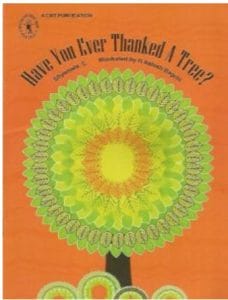 Education is the kindling of a flame, not the filling of a vessel —Socrates.
Education is the kindling of a flame, not the filling of a vessel —Socrates.
Much research has shown the benefits of reading, and despite the rich evidence, librarians are struggling to support reading habits. However, reading habits are not the sole responsibility of the librarian but the entire education system and the parents. When students see adults reading, thinking, and questioning, students will imitate and follow along. Reading breeds Reading.
One of the critical aspects of building a reading habit is developing curiosity and interest – this will then lead to the joy of reading. Here is another post that was written for Raise the Bar on critical thinking with picture books.
How to read aloud?
I’ve noticed that when librarians or teachers read aloud picture books to children, the questions that they ask are simplistic and obvious, thus not challenging children to think and question. Children need to begin thinking and asking questions right from an early age. As librarians, when we read aloud, we can change the way we ask questions and pave the way for discussions.
For example, before we read aloud stories or after we have read a story we often ask –
- Who is the author?
- What is the title of the story?
- What did you learn from the story?
- What is the plot?
- What is the setting or where is the story taking place?
Instead, we should learn the art of Socrative type of questioning or simply as we know it as Higher Order Thinking Skills (HOTS) on the top of Bloom’s Taxonomy.
What is Socrative style or type of questioning?
Socrates was a Greek philosopher, and he said – Education is the kindling of a flame, not the filling of a vessel. If we have to kindle the flame then it is essential to create a library space where there is a dialogue between the students and librarians. There is little or no space for lectures and therefore, no rote learning.
The teacher-librarian can be the one who initiates the questioning process – helps the students to think/ponder and brings out their values and beliefs in the process of discussion. Therefore, building a safe intellectual space for their independent thoughts and opinions.
Types of Socratic Questions?
There are several types of Socrative style of questions, here are three.
1. Clarification Questions
Questions in this Socrative style sound like this:
- What do you mean by…?
- The author has said it this way…. how would you explain it another way?
- What is the main problem here – Can you explain it with another example?
- Why is this important?
- Is this easy or hard?
- Why do you think so?
For example, when you read the book called No Smiles Today by Cheryl Rao illustrated by Saurab Pandey (Story Weaver – Pratham Books) (A story about a little child who is sad and her friends try to guess why she is sad and eventually finding her lost pet which makes her happy again.)
Socrative questions to ask when reading this book would be-
- What is sadness?
- Why do people feel sad?
- The author talks about the child losing her pet and feeling sad – What are other reasons for sadness?
- How do you overcome sadness?
- Is it easy to overcome sadness? Why?
2. Questions about an Issue?
When one reads aloud a picture book with a global issue or problems in society, questions in Socrative-style may sound like this:
- Why is this an important topic to discuss?
- Is it easy or difficult to solve this issue? Why?
- What assumptions can you make about the issue or subject?
- Does this topic/problem lead to other problems and questions?
Use the above questions for this picture book when reading a book like Riddle of the Riddleys (A story about thousands of olive ridley sea turtles on the beach of Orissa, who die each year due to the callousness of fishermen and people.) or any other book related to issues
Another example, if you are reading a picture book like The Why-Why Girl by Mahasweta Devi illustrated by Kanyika Kini (a story about Moyna who can’t go to school because she is a girl and because of her socio-economic conditions). When reading this book, you may ask questions like –
- What is the issue in the story, and why is it essential to discuss this topic about gender discrimination?
- Why is education opportunities not available for all?
- What are the conditions that lead to inequality of education for all?
- Is it easy to solve this problem? Why? Why not?
- What might be different ways to address this issue?
- What can we do at different levels to address this problem?
Similar questions can be asked of a novel. For example, Rippler by Cidney Swanson free on Bookbub is a fantasy novel dealing with a genetic disorder and inhuman experiments during the Nazi rule. Questions about scientific experiments, human body and genetic disorders can be explored, some questions may include:
- What are the different conditions maintained in the laboratory for scientists in India when conducting experiments on animals?
- How human or inhuman is testing on animals? Why? What do you think?
- What other topics are related to genetic engineering?
- If we assume genetic engineering is ok for plants, how can we justify genetic engineering in animals and humans? What are your reasons?
- Can genetic engineering lead to other problems and issues? Can you explain it?
- Questions like the above can open children’s minds and promote thinking, creating interest, curiosity, and reading?
3. Viewpoint Questions
Socrates style of questioning includes learning about different perspectives and opinions. When you learn about other perspectives it builds humility, kindness and empathy. Understanding viewpoints is not to argue and to prove a point, but understanding that others have a viewpoint and it must be equally respected. Each individual has the freedom to think and be responsible. Keeping this concept in mind, different viewpoint discussions can be held during the library class. Before discussions, the librarians must ensure that each individual’s point must be heard, is important and is respectfully conveyed.
Questions to consider are:
- How would other people in other sections of the community feel/think about this? Why?
- Why do you object to this consideration? What facts have you gathered to prove this viewpoint?
- What is an alternative to bring further acceptance or rejection?
Another example to try is this book called, Father’s Inheritance by Elizabeth Laird (Storyweaver – Pratham Books- level 3)
Socrative style or approach of questioning helps students and adults become thinkers. We learn to conduct meaningful conversations. This disciplined approach teaches us to examine ideas and processes with logic and create a practical exploration of content leading to knowledge.
Students and adults may not have answers to any of the questions but it can lead to enquiry, curiosity, interest and reading to investigate their questions and sharing of new knowledge. Asking questions in the right spirit of curiosity and learning leads to success. If you google – Socrative-style of questions you will find lots of resources or check this out.
Warren Berger, a journalist in his book, The Book of Beautiful Questions, say, “You don’t learn unless you question.”

